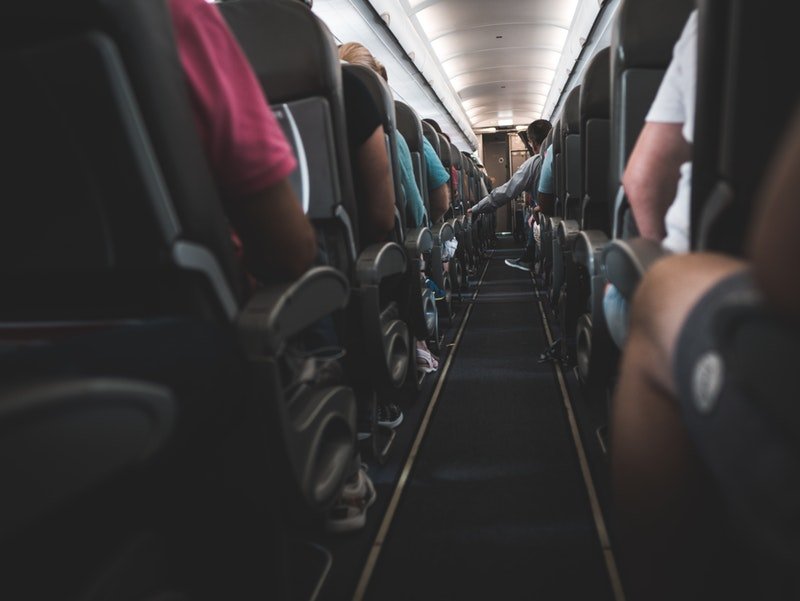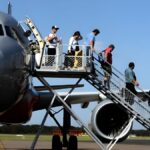Are you a frequent flyer, and worried about the Coronavirus outbreak while your flight? well, you do not need to worry more… read this article carefully to avoid coronavirus on flights.
How to avoid coronavirus on flights
Medical experts have so far recommended frequent hand-washing because of the best way of preventing the spread of the virus.
The wearing of face masks has also been advised, but with billions of individuals in China and therefore the necessity to swap masks up to four times each day, there’s a high demand for the protective gear.
David Powell is a physician and medical adviser to the IATA (International Air Transport Association)
He told media that the coronavirus can’t survive for long on seats and armrests.
The risk of infection is higher when it comes to physical contact between persons.
He adds that masks and gloves help spread bugs instead of stopping them.
Dr. Powell said:
- Viruses and other microbes like to survive living surfaces like us.
- Just shaking hands with somebody will be a greater risk by far than some dry surface that has no biological material thereon.
- The survival of viruses on surfaces isn’t great, so it’s believed that standard cleaning, then the additional cleaning in the event that somebody was discovered to be contagious, is the appropriate procedure.”
He added:
- The hands are the way that these viruses most efficiently spread.
- Top of the list is frequent hand washing, hand sanitizing, or both.
- Avoid touching your face. If you cough or sneeze, it’s important to cover your face with a sleeve.
- Better yet, a tissue to be disposed of carefully, then sanitizing the hands afterward.
- Washing your hands frequently and drying them is the best procedure. When that’s not easy to do on a regular basis, alcohol-based sanitizer may be a good second-best option.
The medical adviser warns that wearing masks and gloves could help spread coronavirus on a flight more efficiently than anything.
Dr. Powell argues that gloves and masks can, in fact, a perfect environment for microbes to thrive.
He said: “There’s very limited evidence of benefit, if any, during a casual situation.
“Masks are useful for people who are unwell to safeguard people from them.
“But wearing a mask all the time is going to be ineffective. it’ll allow viruses to be transmitted around it, through it and worse still, if it becomes moist it’ll encourage the expansion of viruses and bacteria.
“Gloves are probably even worse because people placed on gloves then touch everything they might have touched with their hands.
“So it just becomes another way of transferring micro-organisms.
“And inside the gloves, your hands get hot and sweaty, which may be a really good environment for microbes to grow.”
So how likely is it for passengers to be infected while traveling on an aircraft?
According to Dr. Powell, the chances of risk is low because of the air inside the plane.
He said:
- The risk of catching a significant virus infection on the flight is very low.
- The air supply to a contemporary airliner is extremely different from a movie theater or an office block.
- The air is a combination of fresh air and recirculated air, about half each.
- The recirculated air goes through filters of the exact same type that we use in surgical operating theaters.
- That supplied air is absolute to be 99.97 percent or better freed from viruses and other particles.
“So the risk, if there’s one, doesn’t come from the supplied air. It comes from other folks.”
The coronavirus spreads quicker through human to human contact.
The World Health Organisation defines contact with an infected person as being seated within two rows of one another on a plane.
But people don’t just sit during flights, particularly ones lasting longer than a couple of hours.
They visit the toilet, stretch their legs, and grab items from the overhead bins.
A study by a group of public health researchers found that passengers in window seats came into less contact than those sitting in the middle or aisle seats.
Howard Weiss, a professor of biology and arithmetic at Penn State University, leads the FlyHealthy Research Team study.
He told National Geographic: “If you’re seated in an aisle seat, certainly there’ll be quite a few people moving past you, but they’ll be moving quickly.
“In aggregate, what we show is there’s a quite a low probability of transmission to any particular passenger.”
Some FAQs on Avoiding Coronavirus on Flights
Q: Is there a risk of becoming contaminated with the virus on a plane?
Q: What are the chances of getting the virus by touching the seats, armrest or any of the objects on a plane?
Q: What’s important if you are on a plane to ensure you don’t get infected?
Q: Does wearing masks and gloves help prevent infections?
Gloves are probably even worse, because people put on gloves and then touch everything they would have touched with their hands. So it just becomes another way of transferring micro-organisms. And inside the gloves, your hands get hot and sweaty, which is a really good environment for microbes to grow.
Q: Is shutting borders the answer to containing the spread of the virus?
Q: When can we safely say that the worst may be over?
Source: Express and Others
To get travel updates directly on your mobile, save and send a message at 9461777617 on Whatsapp to start.
Also Read, Coronavirus: Air India flight evacuating 324 Indians from China’s Wuhan





